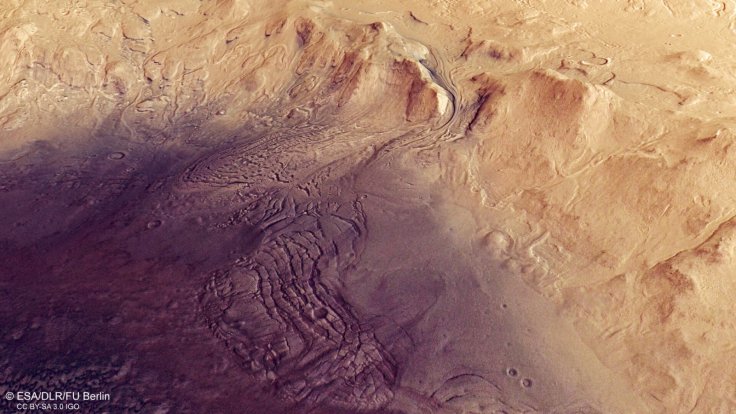Of all the answers that human beings are looking to find on Mars, the amount of water available on the red planet is one of them. While scientists have attempted to arrive at estimates, a new study states that the amount of water present may not be as abundant as previously believed to be.
According to researchers from the Center for Space and Planetary Sciences at the University of Arkansas, water on Mars—which is found in the form of brines—may not be as extensively distributed as previously thought. The findings of the study can help identify ideal locations to find water on the planet in the future.
Simulating the Red Planet's Conditions
Brines are a combination of salts and water. These mixtures are found naturally in marshes, both inland, and saltwater, across Earth. Water on Mars is present in the form of brines. In comparison to pure water, brines exhibit remarkable resistance to boiling, evaporation, and freezing.

For the study, the team worked on the surface and shallow subsurface computer models of brine mixtures at their different phases. Dr. Vincent Chevrier, first author of the study, noted that, so far, the standard approach of studying liquids has been in only one of its phases.
Therefore, the authors considered all the major phase changes of liquids in the study. "It is looking at all the properties at the same time, instead of one at a time. Then we build maps taking into account all those processes simultaneously," stated Chevrier.
The researchers collected data about brine evaporation rates through a series of experiments on the center's Mars simulation chamber. This data, along with a global weather circulation model of the planet was used to construct maps of the potential locations where brines were most probable of being found across the planet named after the Roman god.
Finding Water to Find Life
The findings of the study suggested that older studies may have overvalued the quantity of brine on Mars, and the duration for which brines persist on its surface under the influence of an atmosphere that is thin, cold, and arid. "The most important conclusion is that if you do not take all these processes together, you always overestimate the stability of brines. That is the reality of the situation."

Locating brine reservoirs on Mars can help scientists identify spots where they can seek out past or present life on the planet, and most importantly, provide potential sites to which humans hoping to travel to Earth's neighbor can find water.
So the important question is, 'Where is brine most likely to be found on Mars?'. According to Dr. Chevrier, the most favorable conditions for the presence of stable brines on the Martian surface may be found in mid-to high-northern latitudes, and also in the large impact craters that exist in the southern hemisphere.
As far as the shallow subsurface, brines may be concentrated close to the planet's equator. Owing to the conditions on the red planet, brines could be available for around 12 hours a day under the most ideal conditions. "Nowhere is any brine stable for an entire day on Mars," concluded Dr. Chevrier.









